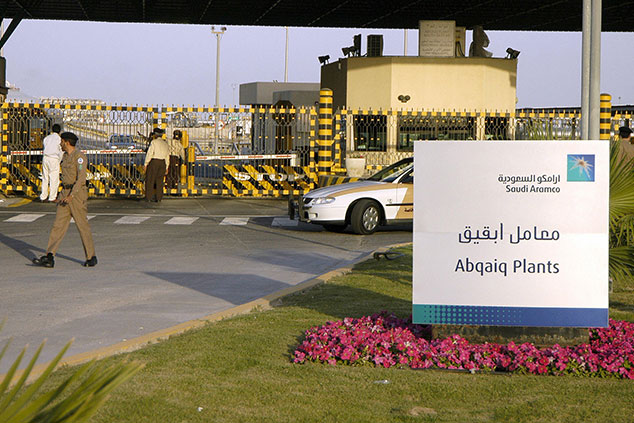
This article is taken from our FREE daily investment email Money Morning.
Every day, MoneyWeek’s executive editor John Stepek and guest contributors explain how current economic and political developments are affecting the markets and your wealth, and give you pointers on how you can profit.
The price of oil spiked by a fifth at one point this morning.
Brent crude surged by nearly $12 a barrel, to more than $71. It’s eased back since then but it’s still up by more than 10%.
You don’t see those sorts of moves every day.
But then, nor do you see half of Saudi Arabia’s oil production knocked out of action every day.
How half of Saudi Arabia’s oil production was knocked out
On Saturday, Saudi Arabia’s oil infrastructure was attacked.
I’m an expert on neither oil treatment plants nor military hardware (this isn’t a Tom Clancy novel), so I’m not going to get technical here, and I apologise to the many engineers among our readers if I get anything wrong.
But long story short, oil needs to be treated before it is ready for export. The Saudi facility, Abqaiq, is a key part of this process, removing impurities. If it doesn’t get treated, the oil can’t get to market.
What happened is that some vital bits of the Saudis’ treatment infrastructure at Abqaiq were knocked out by a series of drone strikes. These strikes were apparently extremely accurate.
Who did it? Saudi Arabia has been waging war in Yemen for four years now. Houthi rebels there claim responsibility for the Abqaiq attack, saying that they pulled it off a swarm of ten drones. And they have been using drones to make similar attacks in the last year or so.
But the US is sceptical about this, and it’s pointing the finger at Iran. We could burrow deep down into a conspiracy theory rabbit hole at this point, but there’s no point. I don’t know for sure who did it any more than you do, but Iran certainly isn’t a huge fan of Saudi Arabia, and seems a likely contender.
Anyway, as a result, about half of the country’s crude oil output has been knocked out of action. That’s not far off six million barrels of oil a day, which in turn represents about 5% of global oil supply.
Hence the double-digit spike in the oil price this morning. We haven’t seen this sort of thing since the invasion of Kuwait by Saddam Hussein in 1990. Which of course, has uncomfortable parallels as to what might occur next.
Could this be the pin to prick the bond bubble?
So what happens next for oil prices? There are two main issues to consider on that front. First, there’s the practical question of how quickly the Saudis can get things working again. That will become clearer over this week. In the meantime, both the US and Saudi Arabia have oil reserves that can be used to tide the market over.
So the initial spike is a shock reaction. The actual disruption to supply may be less extreme than it appears. However, the more complicated second factor is the “risk premium” that now gets added to the oil price.
The problem is that this attack opens up a whole host of unpleasant new possibilities. If a small swarm of drones can cripple key oil facilities, then what’s to stop this from happening again? And what if it escalates? We’ve already got the US pointing fingers at Iran. Are we going to see yet another Gulf war? You would hope not, but who knows?
Beyond oil, on a wider scale, there’s the question of what higher oil prices do to inflation and inflation expectations. Last week, I noted that James Ferguson of the Macro Strategy Partnership has been flagging up the close relationship between the oil and gold prices, and consumer price inflation.
In a note from Gavekal this morning, Louis Gave notes that the bond bubble has been sustained by the idea that inflation is “dead and buried”. This is, in itself, not true – indeed, inflation “has been creeping higher, despite a strong US dollar and a weak oil price”.
A spike in the oil price could be just the event to shake up a market that has, until now, been fixated on the threat of a deflationary crisis. “The renewed threat of war in the Middle East, the potential destabilisation of Saudi Arabia, and a possible conflict between Saudi and Iran all highlight the immediate risk that the next shock to the system could actually be inflationary.”
An inflationary shock in a world positioned for relentless deflation? That’s going to wreak havoc on an awful lot of portfolios.
It’s yet another variable to throw into our current volatile geopolitical mix. And it’ll be yet another thing for us to discuss at the MoneyWeek Wealth Summit on 22 November (James Ferguson will be among the many panelists, so he can give us all his latest views on oil then) – don’t miss it.